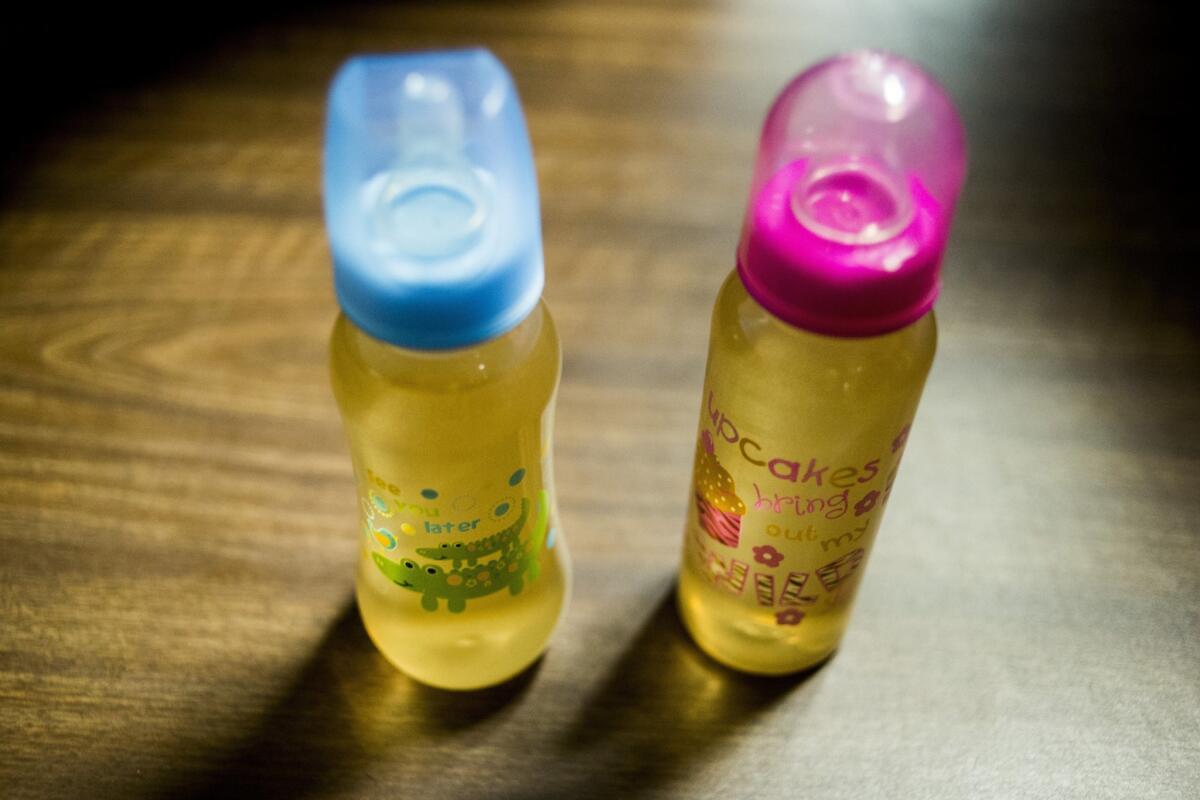Editorial: Dirty water isn’t just a Flint problem

Bottles owned by Flint residents and filled with water sit on a table outside of city council chambers as Michigan Gov. Rick Snyder speaks during a news conference in Flint, Mich. on Jan. 11.
- Share via
Two days before primary voters go to the polls in Michigan, Democrats will bring the Bernie Sanders-Hillary Clinton debate road show to the put-upon city of Flint on Sunday, where they will doubtlessly discuss the city’s well-publicized water crisis. Sanders and Clinton can take turns blaming Republican state officials for their sluggishness in protecting residents from the dangerous levels of lead that leached into their tap water, the result of a temporary cost-saving switch from a tried-and-true lake supply to more corrosive river water.
From a California vantage point, Flint’s water troubles can appear a bit alien. Those folks in Michigan have seen lots of hard times, with the decline of the U.S. auto-making industry collapsing the state’s economy, vaporizing jobs and shrinking the tax base. But clean water — they have plenty of that, right? They are barely an hour’s drive from Lake Huron, one of the planet’s largest virtually inexhaustible freshwater supplies. Parched California should be so lucky. With our crystal clear snowmelt from the Sierra Nevada, the Rockies and the Cascades, our problem is volume, not quality.
Or is it? Much of that snowmelt feeds the San Joaquin River, which loses so much water to farms on its flow north that it goes completely dry for a stretch — then picks up again in part on the strength of agricultural and urban runoff, laden with nitrates and other contaminants. It is that dirty water that makes its way to the Sacramento-San Joaquin River Delta to be pumped to residents in Silicon Valley and Southern California. Or consider the tap water in the Los Angeles County city of Maywood, which still comes in various colors and odors despite recent legislation imposing strict guidelines on the city’s four private suppliers. Or Santa Monica, whose supply became contaminated with gasoline additives. Or indeed Los Angeles, which has been unable to make much use of its huge San Fernando Valley aquifer because it is contaminated with industrial solvents and chemical waste.
Los Angeles might well have also had a lead problem were it not for a program a decade ago to replace lead fittings. And the city is now moving to clean up the aquifer. Santa Monica could afford to switch to imported water and then clean up its own supply. But as in Flint, poverty narrows the options for Maywood and a host of San Joaquin Valley towns. A recent state bond will help, but clean water remains agonizingly out of reach for many Californians who struggle as much with quality as with shortage.
Quality problems and shortages are increasingly reaching crisis proportions for people worldwide regardless of their proximity to vast lakes or rivers. Water security arises not just from adjacent supplies but from adequate wealth and responsible politicians. That’s something to keep in mind as Sanders and Clinton face off in Flint.
Follow the Opinion section on Twitter @latimesopinion and Facebook
A cure for the common opinion
Get thought-provoking perspectives with our weekly newsletter.
You may occasionally receive promotional content from the Los Angeles Times.



